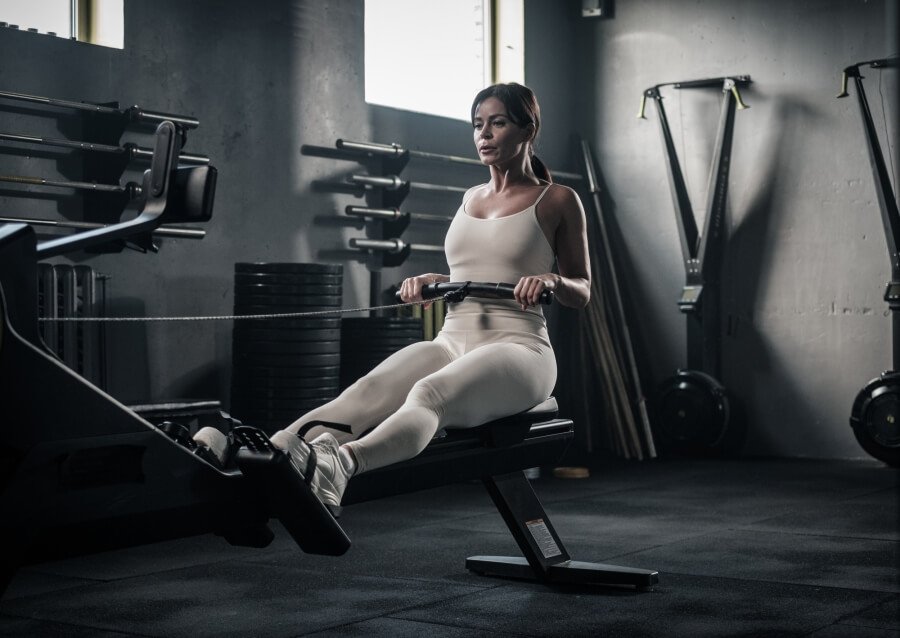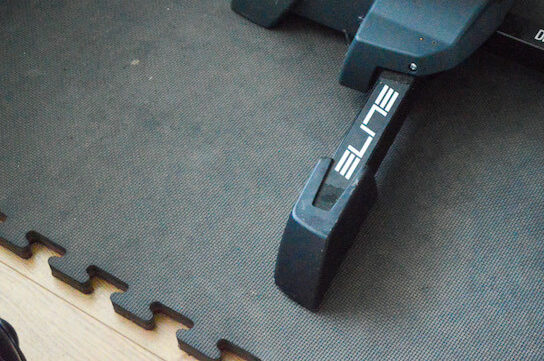Intro
One of the most shared questions and complaints from indoor
However, as with most things in life, there are ways around problems, and when it comes to deadening the sound of your indoor rower, it’s no different. Whether it’s soundproofing your training room with expensive materials, buying cheap rubber mats, or simply using clutter and furniture, there are affordable and effective ways to keep the noise down.
In this article, I’ll provide simple yet effective tips and strategies to help home users enjoy the benefits of working out at home in a safe, silent, and peaceful environment; Well, almost silent.
But before we do that, let’s take a look at why indoor rowing machines are so noisy to begin with.

How Loud Is An Indoor Rowing Machine?
How loud your indoor rowing machine is will depend on several different factors, all of which you can take into consideration before spending your hard-earned cash on a piece of indoor
Some factors to consider when it comes to noise are:
- The quality of the flywheel
- The quality of material used to manufacture it
- The reputation of the brand and most significantly
- What type of resistance system your indoor rower has
Other factors also come into play when trying to minimize the sound of your rower. Factors like the size of your workout room, how much clutter you have in it, and whether you have tiled floors or carpet all play big roles in determining how loud your rower will be.
Unfortunately, it’s a sad fact of life that how much money you spend generally determines the quality of your home gym equipment. When it comes to an indoor rower and how much sound it makes, the price point of your rower could make all the difference.
Typically, the more expensive indoor rowing machines use magnetic and electronic resistance systems, which make your rowing experience smooth and quiet. Many rowers these days also use air resistance systems, and although they are generally less expensive, they offer an excellent alternative to magnetic and electronic resistance systems.
Simply put, the price point of your indoor rowing machine will affect the sound and exactly how loud it is. Not to worry, though, below we have four expert proven tips used by indoor rowers to help keep the sound to a minimum.
Can You “Soundproof” Your Indoor Rowing Machine?
Simply put. YES, you can soundproof your indoor rowing machine; well, to a certain degree anyway. Let’s face it, rowing machines are inherently loud, so no matter what tips and tricks you try, your indoor rower is still going to be noisy.
That being said, there are several proven tips and tricks that home gym users have been using for years to help keep the noise down and their family and neighbors happy. Simple yet effective strategies like rubber mats, heady duty curtains, music, and clutter are all things that can help to reduce the sound of your rower.
There are other ways to keep your indoor rowing machine “as quiet as a mouse,” such as regularly cleaning from any dust and sweat and keeping the maintenance schedule regular. Most rowers are pretty easy to maintain. A good squirt of degreaser followed by some high-quality lube is generally enough to keep your rower smooth.
Remember, a smooth rower is a quiet rower. However, if your rower is overly loud and it seems like something may be broken, be sure to contact the dealer immediately for customer support. In this case, DO NOT try to fix it, as you could void the warranty.

Which Type Of Indoor Rowing Machine Is The Quietest?
It can be very confusing, especially for those looking to purchase an indoor rowing machine for the first time. So many brands, some repeatable, some not, shiny models, high-dollar ad campaigns, and superstar athlete endorsements, are enough to baffle even the most experienced
Many factors determine how quiet a rowing machine is. Materials, price points, components, and brand reputation are just a few. But when it comes to push and shove, the most critical aspect to consider when purchasing your indoor rower is its type of resistance system.
Yes, rowers have different resistance systems, which all have benefits and disadvantages of their own. Some resistance systems are expensive but offer the user a quieter experience, while others are cheaper and subsequently louder. Im sure we all remember the old chain resistance rowers from high-school gym class; I don’t think that rower would go down too well in an apartment.
Some of the most common resistance systems found on indoor rowing machines are:
- Magnetic Resistance Systems, which are very quiet, although generally more expensive
- Electronic Resistance Systems are also extremely quiet and relatively pricey
- Air Resistance Systems are some of the most popular due to their quiet nature and affordable price point
- Chain Resistance System; Cheap and loud; VERY LOUD
It’s essential to choose carefully because the last thing you want is to spend thousands of dollars on an indoor rower only to get complaints from your neighbors. Something tells me your landlord won’t be too happy.
If you have the budget for a high-quality indoor rowing machine, then it’s a “no-brainer” you should choose either magnetic or electronic resistance systems.
Rowing manufacturers understand that not everyone has an unlimited budget. This is why manufacturers mass-produce very reliable and affordable air resistance systems. The air resistance system is relatively quiet and, if well maintained, should last for years and years.
Four Top Tips To Make Your Indoor Rower Quiet
Below are four proven tips that will keep your indoor rower quiet and your friends and family happy.
Carpet or Floor Coverings

Have you ever noticed that every gym you walk into is covered by heavy-duty black rubber mats? Now, while the heavy-duty floor covering helps to protect the floor and the machines from damage, it’s also there to help reduce the sound that comes from the weight and cardio machines.
Treadmills, indoor rowers, and indoor bikes are pretty loud, and when you get ten lined up in a row, they’re even louder. Carpet also does an excellent job at drowning out the sound, although the only real problem with carpet is that it can get pretty gross with all the sweat and dust from working out.
Rubber mats from the hardware store or even an old yoga mat are a much cheaper and easier alternative to deadening the sound of your indoor rower. Mats are easy to wipe away sweat and super easy to keep clean after every workout.
Top Tip: Keep some paper towels and organic chemical-free disinfectant in your training room; this will help keep your expensive gym machines clean and hygienic. Wiping your machines down after every use is also a great habit to get into.
Pump Up The Jams

If you’re like me, then you probably have the music blaring while you’re working out. Music helps to motivate us and inspire us to push through those long and challenging workouts. But guess what? Music is also an excellent way to “drown” out the sound of your indoor rower.
Granted, this solution to deadening the sound of your indoor rower only works well if you are working out at home alone and don’t live in an apartment building.
If you live in a house and your
Heavy Duty Wall Covering & Curtains
The walls of my
In this instance, one of the best ways to keep the sound of your indoor rower down is to use extra-thick window curtains. The heavy material helps reduce the sound by absorbing the vibrations that come from working out at high intensities. This stops the noise from traveling to other rooms and minimizes the echo.
Again your curtains don’t have to be fancy or expensive; as long as they are extra thick, that’s the main thing when trying to deaden the sound.
Clutter; The More The Merrier
I can speak from experience because I use a dedicated room for all my indoor
However, when it comes to “deadening” the sound of your indoor
I found that using a bunch of large plants and a lovely two-seat sofa was a fantastic way to keep the sound down. It also has the added benefit of making my
Frequently Asked Questions
If you haven’t learned everything you need to know about making your indoor rower quiet, here are a few FAQs to help answer those questions and broaden your knowledge.
Why Are Indoor Rowing Machines So Loud?
Generally speaking, indoor rowers are loud because of the sound that is created from the flywheel as you pull on the handles. Depending on what type of resistance system your rower has will determine how loud it is. Typically, magnetic resistance systems are the quietest but also the most expensive. Air resistance systems are an excellent alternative and are cheaper too.
How Can I Keep My Indoor Rower Silent?
There are several ways to keep your indoor rower as quiet as a mouse. Rubber matting works very well, and it doesn’t have to be expensive, either. A simple yoga mat, or two, underneath the legs of your rower should be enough to dampen the sound and keep your family and neighbors happy,
Is a Treadmill Louder Than A Rower?
Without a doubt, treadmills are much louder than indoor rowing machines. This is simply because not only do treadmills have loud flywheels and mechanisms but as your entire bodyweight hits the belt, the sound and vibrations are tremendous. The only real noise on a rower comes from the flywheel itself and NOT your body weight.
That’s A Wrap
Let’s be honest; your indoor rowing machine will never be as quiet as a mouse, but with that said, if you follow the tips above, you can drastically reduce the sound. To be honest, I like the sound. It gives me a sense of working hard and that I’m changing my physique for the better.
Remember, the resistance system significantly affects the overall sound of your indoor rower. Magnetic resistance systems are the quietest but the most expensive, while air and digital resistance systems provide a reasonably quiet workout session.
If you had to choose one way to deaden the sound of your rower, I would suggest selecting the yoga or rubber mats to go underneath your rower; this is the easiest and cheapest way to keep your spouse, kids, and neighbors happy.
So take the time to research thoroughly before deciding to purchase the right indoor rowing machine for you.
